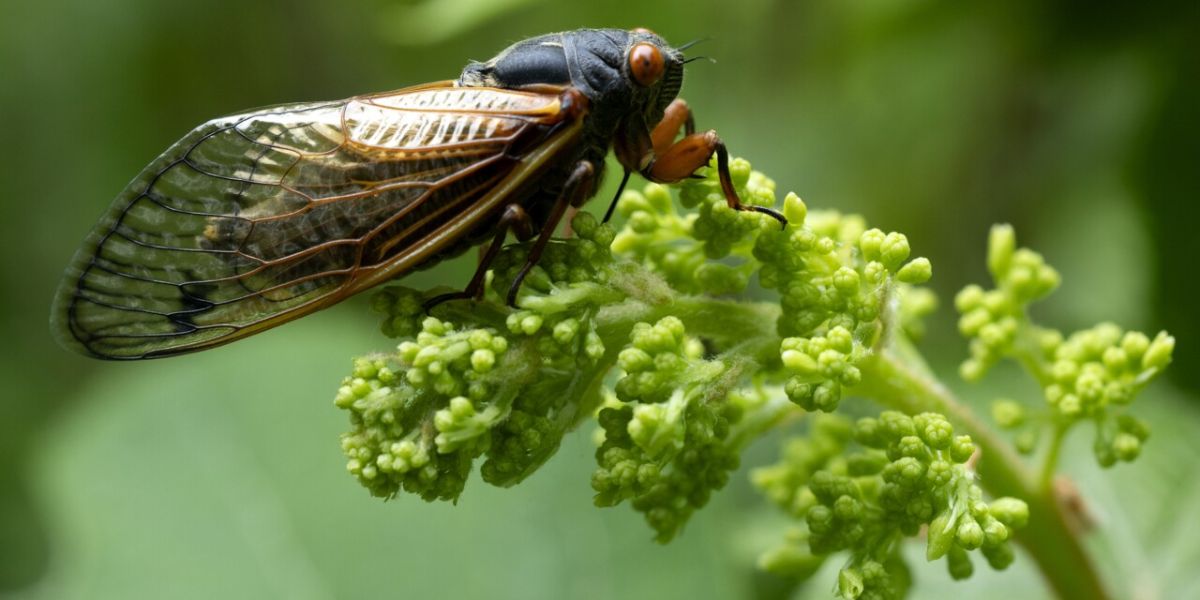Kentucky, known for its bourbon, bluegrass, and horses, is gearing up for another major natural event: the emergence of billions of cicadas. These winged insects, set to emerge starting this month, are part of the periodical cicada brood that will bring a weeks-long, noisy, and frenzied mating ritual to the state.
A Massive Cicada Invasion
This year’s cicadas belong to Brood XIV, a group of cicadas that live on a 17-year cycle. These periodical cicadas are expected to surface in Kentucky and Tennessee primarily, but also in parts of Illinois, Indiana, Virginia, West Virginia, North Carolina, Georgia, and small portions of Pennsylvania, Massachusetts, and New York.
As Kentucky is seen as the epicenter of this emergence, some have dubbed this group the “bourbon brood,” tying the insects’ cyclical nature to the aging process of the state’s famous bourbon whiskey.
The Life Cycle of Periodical Cicadas
The insects’ dramatic return to the surface occurs after spending 17 years underground feeding on tree roots. Their emergence is often triggered by soil temperatures reaching around 64°F. While the cicadas’ return happens once every 17 years for Brood XIV, there are other broods that follow either a 13-year or 17-year cycle.
Kentucky’s unique connection to this event is symbolic, as Jonathan Larson, an assistant extension professor in entomology at the University of Kentucky, pointed out, comparing the long underground wait of cicadas to the process of aging bourbon in barrels.
Noise and Nuisance
The most distinct feature of this event is the deafening noise that cicadas produce, reaching up to 100 decibels, which they use to attract mates. The sheer volume and constant sound of their buzzing can be overwhelming, but it is all part of the mating ritual that takes place as these cicadas emerge, mate, and die within a few weeks.
“The whole thing is wild and beautiful and weird and kind of wonderful,” Larson said, acknowledging both the fascination and the annoyance that comes with the mass emergence.
As they die, the carcasses can cause unpleasant smells in areas where they accumulate, although at the start of the emergence, there’s no odor. The mass of dead cicadas often leaves behind piles of bodies that may emit a decomposing scent in the weeks that follow.
A Unique and Beautiful Phenomenon
The cicada emergence is a rare natural occurrence that only happens in the U.S., making it a unique opportunity for local and visiting enthusiasts alike. While the insects’ noise can be disruptive, many view it as a fascinating phenomenon to experience. The cicadas will be most abundant in Kentucky and Tennessee in the coming weeks as the soil warms and their emergence peaks in June.
Climate Change and Its Potential Impact
Larson also raised concerns about how climate change might affect the cicadas’ timing. Warmer temperatures earlier in the year could push them closer to the surface prematurely, leaving them vulnerable to late freezes or extreme weather events such as flooding, which Kentucky has seen more of in recent years.
With this in mind, scientists are increasingly focused on studying the impacts of climate change on cicada broods, aiming to better understand how these insects’ behaviors might evolve in response to shifting environmental conditions.
Citizen Science and Cicada Tourism
Those interested in observing this natural spectacle are encouraged to do so, with Larson even suggesting “cicada tourism.” Citizen scientists can participate in the Cicada Safari project, an app where they can record sightings and geographical data, contributing to research efforts.
This cicada event is a true spectacle and a reminder of Kentucky’s rich natural heritage, as billions of these noisy insects rise from the earth to complete their 17-year-long journey.

 by
by 

